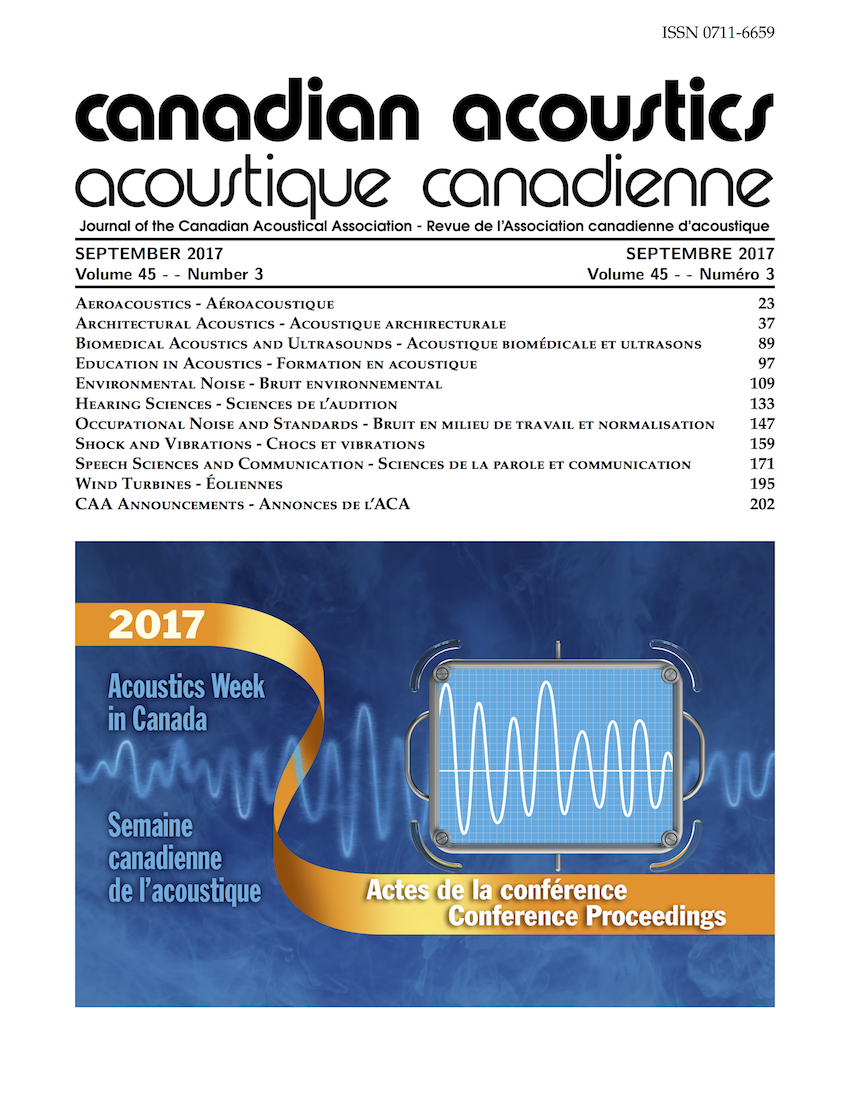Insertion loss of hearing protection devices for military impulse noise
Résumé
Military operators are exposed to different kinds of impulse noise sources, including small calibre weapon fire, heavy artillery fire and low-level blast from breaching exercises. For training purposes, limits for the number of exposures per day are indicated in training doctrines. However, there is often no background information on how the daily limits are calculated and insufficient guidance on the use of hearing protection devices (HPDs). With changing guidelines on impulse noise damage-risk criteria and evolving HPD technology, unit commanders often question the validity of the exposure limits and are uncertain about which HPDs to provide to their personnel. We have measured the impulse noise levels of several different Canadian Armed Forces (CAF) and Israel Defense Forces (IDF) weapons near the operator's ear, as well as the insertion loss of different types of HPDs using an acoustic test fixture (ATF). The peak levels of small calibre rifles and machine guns were in the range of 153 to 165 dB peak near the ear. The 1/3 octave band insertion loss results of passive and active earplugs showed that 1) different insertion loss levels were obtained for different types of noise sources and 2) the ATF measurements often exceeded the limits of bone conduction. The results suggest that it is not sufficient to measure only the peak insertion loss of an HPD; rather, the spectrum must be analyzed for different types of weapons and HPDs. This complicates the task of including HPD insertion loss in the calculation of daily exposure limits. Practical concerns for military operators, including compatibility of HPDs with other personal protective equipment and communication requirements, will also be discussed.
Fichiers supplémentaires
Publié-e
Comment citer
Numéro
Rubrique
Licence
Author Licensing Addendum
This Licensing Addendum ("Addendum") is entered into between the undersigned Author(s) and Canadian Acoustics journal published by the Canadian Acoustical Association (hereinafter referred to as the "Publisher"). The Author(s) and the Publisher agree as follows:
-
Retained Rights: The Author(s) retain(s) the following rights:
- The right to reproduce, distribute, and publicly display the Work on the Author's personal website or the website of the Author's institution.
- The right to use the Work in the Author's teaching activities and presentations.
- The right to include the Work in a compilation for the Author's personal use, not for sale.
-
Grant of License: The Author(s) grant(s) to the Publisher a worldwide exclusive license to publish, reproduce, distribute, and display the Work in Canadian Acoustics and any other formats and media deemed appropriate by the Publisher.
-
Attribution: The Publisher agrees to include proper attribution to the Author(s) in all publications and reproductions of the Work.
-
No Conflict: This Addendum is intended to be in harmony with, and not in conflict with, the terms and conditions of the original agreement entered into between the Author(s) and the Publisher.
-
Copyright Clause: Copyright on articles is held by the Author(s). The corresponding Author has the right to grant on behalf of all Authors and does grant on behalf of all Authors, a worldwide exclusive license to the Publisher and its licensees in perpetuity, in all forms, formats, and media (whether known now or created in the future), including but not limited to the rights to publish, reproduce, distribute, display, store, translate, create adaptations, reprints, include within collections, and create summaries, extracts, and/or abstracts of the Contribution.


